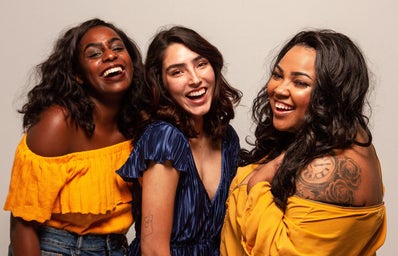Diversity in modeling can be hard to come by, since the modeling industry often favors the white and skinny over models of diverse races and body types. As a result, these models do not represent the general population, causing people to feel self-conscious of their bodies as they compare themselves to the perfect models that are featured in advertisements in TV, magazines, social medias, and billboards. These models represent a standard that a tiny percent of the population can reach, sometimes even themselves, as retouching and photoshop adds to the perfection of models by further getting rid of any imperfections that they might have.
However, there are some companies that are turning away from the stereotypical model in lieu of models who better represent the average person. Here are som ad campaigns that embrace diversity in modeling, encouraging men and women to accept themselves and their bodies as they are, rather than striving for the unattainable.
Aerie’s “Real Me” Campaign
The Aerie “Real Me” movement has been one of the most diverse lineups in advertising in quite some time. The campaign doesn’t just focus on women of different body types, but women of different races, hair textures, abilities, and appearances.
The “Real Me” models are not the standard models who are touched up to show no sign of imperfection. This ad campaign features black women with a variety of skin tones and hair textures. It features models with disabilities, like the models posing in wheelchairs and with crutches. There is even a model featured wearing her insulin pump and another with her colostomy bag. This ad campaign features multiple overweight women, and overweight women who don’t have an hourglass figure, including a woman who wears above a size 14. There is even an older model, providing representation for older women who are not usually represented in advertisements like this.
The models also aren’t touched up at all in this photoshoot. Women with stretch marks display them proudly. Women throughout the shoot are seen sporting their tattoos. Further, scars from surgeries and accidents are also left as is.
The entire campaign’s goal is to help women accept themselves for who they are and to prevent them from comparing themselves to models who do not represent the average woman. The aim was for the average woman to look at this advertisement and see women who look like themselves wearing the products, and Aerie’s diverse lineup helps so that every woman can find herself in the models featured in the advertisements and on the online site.
Jennifer Foyle, the Aerie Global Brand President, commented on the campaign. “Now, more than ever,” she says. “We want to encourage women everywhere to embrace their own unique qualities and beautiful real selves.”
JCPenney’s “Here I Am” Campaign
In JCPenney’s “Here I Am” campaign, they feature overweight women talking about the restrictions and ways that they are forced to look at and experience their bodies because of social stigma against overweight women. They talk about how they are held back from certain careers, like singing or being a yoga instructor, because the people around them believe that only skinny women are successful in those jobs.
However, the advertisement shows the women rejecting the social stigma against being overweight. As one of the women says: “Fat girls can do whatever they want.” It promotes the idea that women can be and dress however they want, rather than following the fashion rules that society has set for overweight women to make them appear skinnier. Instead of encouraging these women to lose weight, it helps them to embrace who they are and to stop thinking of their size as a bad thing. The ad reinstates the idea that you don’t have to be skinny to be beautiful, and that overweight women are beautiful women too.
Dressman’s “Man Underwear” Campaign
While most body positivity campaigns are directed towards women, men’s advertisements have a lot of the same problems in terms of diversity and representation. Typically, in men’s advertisements, it features the same body type, which isn’t the average male body type, but the perfect body type. Male models have rippling 8-packs, chiseled pecs, and defined arms, legs, and jawlines. Just like how the effect of the Barbie-body is harmful to women, this causes many men to feel self-conscious about their bodies, since they cannot reach the unattainable standards that these models promote. Further, studies show that about one-third of Americans with eating disorders are men, and that 38% of all men are “willing to give a year of their lives to get the perfect body.”
To help combat the effects that lack representation and diversity in modelling and advertisements has on men, Dressman released their “Man Underwear” campaign. The campaign starts off featuring the stereotypical male model who has the perfect body, but then after highlights and celebrates men of many different body types and ages to represent what men really look like. Much like women’s campaigns, the men aren’t touched up in these ads; they are comfortable sporting their freckles, wrinkles, and tattoos.
As one commentator points out, the Man Underwear campaign “is not just for the ‘perfect man,’ is it for the 3.4 billion perfect men in the world. Because everyone is perfect just the way they are.”
Men and women come in all different sizes, and advertisements and campaigns like these three that promote diversity through their chosen models can help people feel good about their bodies.


